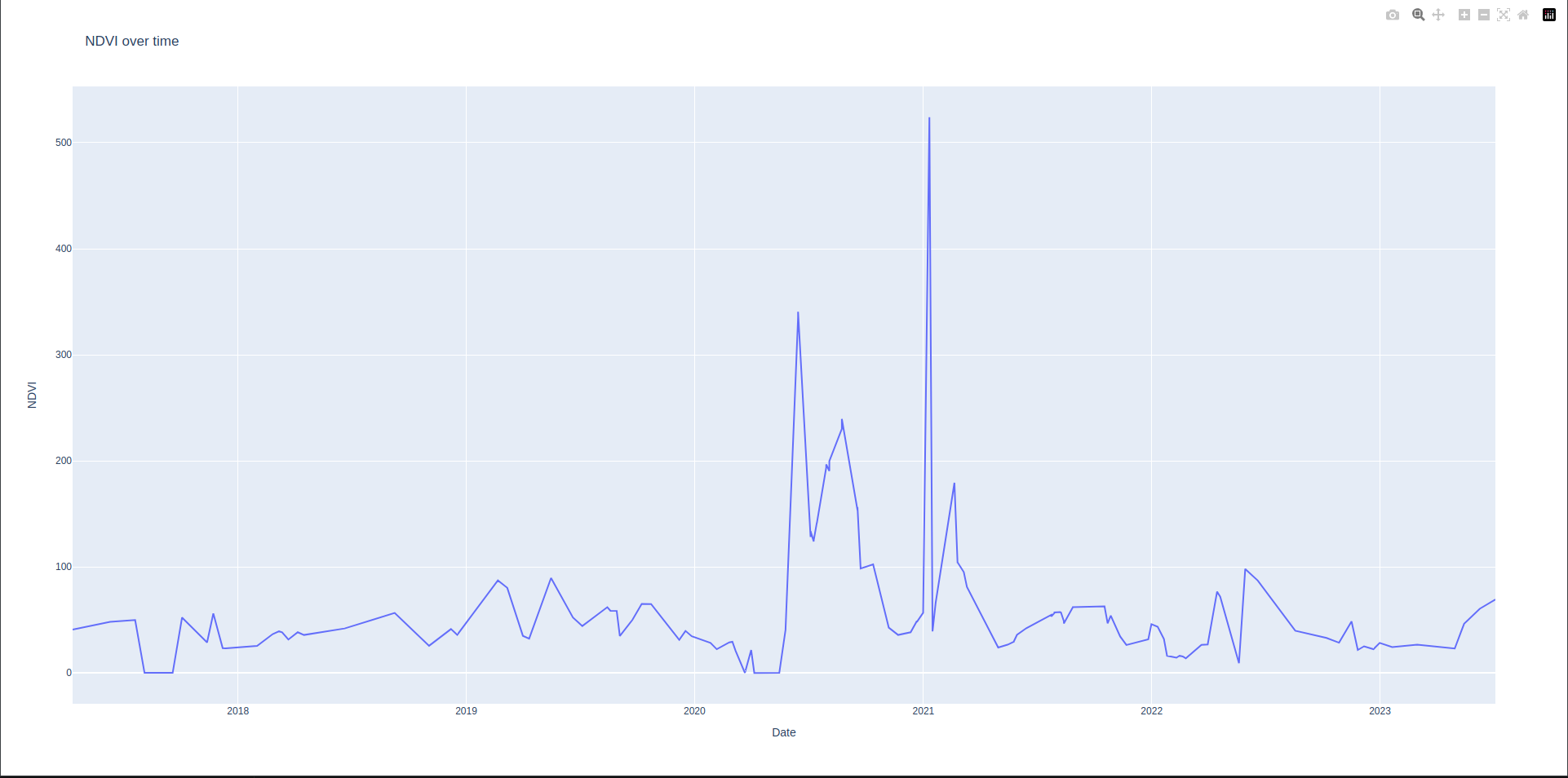The NDVI Time-Series Analyzer is a Python script that calculates and visualizes the Normalized Difference Vegetation Index (NDVI) for given geospatial points over a specified time range using Sentinel-2 L2A imagery.
- os
- numpy
- pandas
- geopandas
- plotly.express
- scipy
- datetime
- satsearch
- shapely
- rio_tiler
- loguru
- joblib
- Ensure you have all the dependencies installed.
- Clone/download the repository.
- Prepare a GeoJSON file named
points.geojsonin the root directory. This should contain the geospatial points you want to analyze. - Adjust the
start_yearandend_yearvariables at the end of the script to set your desired date range. - Run the script.
-
get_pixel_value(urls, lon, lat, datetime): Retrieves the pixel value for specified bands at the given coordinates.
-
process_period(id, start_year, end_year, geometry): Processes a specified date range for a given point, fetching and analyzing satellite data.
-
plot_ndvi(df): Calculates, smoothes, and visualizes the NDVI values over time.
-
execute(start_year, end_year, geojson_file): Main execution function that reads in the GeoJSON data and triggers the data processing and visualization.
STAC_API_URL: URL for the STAC API.COLLECTION: Name of the satellite data collection.CLOUD_COVER_LIMIT: Maximum acceptable cloud cover percentage for satellite data.
- This script currently only supports points in the GeoJSON file.
- Ensure that the
points.geojsonfile has a column named 'ID'. - Data fetching and processing may take some time depending on the date range and number of points.
